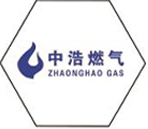
8 月 . 17, 2024 10:36
Back to list
Understanding Gas Pressure Regulators for Safe and Efficient Operation
Understanding Gas Regulators Essential Components for Safe Gas Usage
Gas regulators are crucial devices in the world of gas distribution and management. They play a vital role in ensuring that gases, whether natural gas, propane, or other forms of gas, are delivered safely and efficiently to various applications including residential, commercial, and industrial operations. Understanding how gas regulators work, their importance, and their components can help individuals and businesses manage gas use safely and effectively.
What is a Gas Regulator?
A gas regulator is a mechanical device that reduces the pressure of gas from a high-pressure source to a lower, usable pressure. These devices ensure that the gas is delivered to the end user at a consistently safe pressure, avoiding the risks associated with high-pressure gas, such as leaks, explosions, or other dangerous situations. Gas regulators come in various forms, accommodating different gas types and applications, but they all perform the critical function of pressure regulation.
How Do Gas Regulators Work?
Gas regulators utilize diaphragm or piston mechanisms to maintain a steady output pressure. When gas flows into the regulator, it pushes against a diaphragm that expands and compresses. As the diaphragm moves, it opens or closes a valve that controls the flow of gas. This dynamic operation ensures that regardless of fluctuations in the input pressure—caused by changes in the supply line pressure, for example—the output pressure remains relatively constant.
Many regulators are equipped with relief valves that provide an extra layer of safety. If the output pressure exceeds a predetermined level, these valves release excess gas, preventing potential hazards.
Importance of Gas Regulators
The importance of gas regulators in gas systems cannot be overstated. First and foremost, they enhance safety. High-pressure gas can be hazardous, leading to dangerous situations like fires, explosions, and leaks. Regulators mitigate these risks by providing a controlled environment for gas usage.
gas regulator

Moreover, they improve the efficiency of gas usage. By maintaining consistent pressure, appliances and systems that rely on gas can operate optimally, leading to reduced wastage and better performance. This not only conserves energy but also helps lower operational costs for both businesses and households.
Additionally, gas regulators contribute to compliance with safety regulations and standards established by industry bodies. Properly installed and maintained regulators ensure that gas systems meet legal requirements, which can help avoid penalties and improve safety for users and the environment.
Types of Gas Regulators
There are different types of gas regulators available in the market, each designed for specific applications. Some common types include
1. Single-Stage Regulators These are commonly used in low-pressure applications like household appliances. They reduce high-pressure gas to a lower level in a single step.
2. Two-Stage Regulators These are more complex systems that first reduce pressure to an intermediate level and then down to the desired delivery pressure. They are often used in commercial or industrial applications where stable pressure is critical.
3. High-Pressure Regulators Designed for systems handling larger volumes of gas under high pressure, these regulators are essential in various industrial applications.
Conclusion
In conclusion, gas regulators are essential components in the safe and efficient use of gas across various applications. They ensure that users receive gas at the appropriate pressure, significantly reducing the risks associated with high-pressure gas systems. Whether in residential heaters or large industrial processes, understanding the function and importance of gas regulators contributes to overall safety and efficiency in gas management. For anyone working with gas systems, regular maintenance, and proper installation of gas regulators should be a priority to ensure ongoing safety and efficiency.
Latest news
-
Unlocking The Quality Gas Pressure ReducersNewsNov.01,2024
-
The Role of Gas Pressure Reducing StationsNewsNov.01,2024
-
The Importance and Functionality of Safety Relief ValvesNewsNov.01,2024
-
The Essential Role of Safety Valves in Natural Gas ApplicationsNewsNov.01,2024
-
The Essential Role of Gas Pressure RegulatorsNewsNov.01,2024
-
Enhance Your Premium Gas FiltersNewsNov.01,2024

